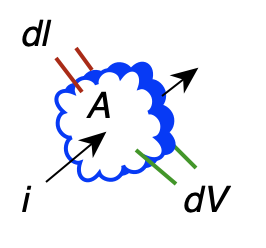How do we define area of cross section of a conductor for resistance of a metal piece.
When you a wire which is generally cylindrical you have a length of it. Its area of cross section is a circle whose plane is perpendicular to the length of cylinder at any point.
But what if it take a very irregular shape which we would call as a piece not wire. How can i calculate its length and area of cross-section after taking any two point om its surface as end points.
Edit: Think of a metal piece which is irregular in shape with no flat surface(not sphere) and take two points A and B on it which are not the farthest point on it.

